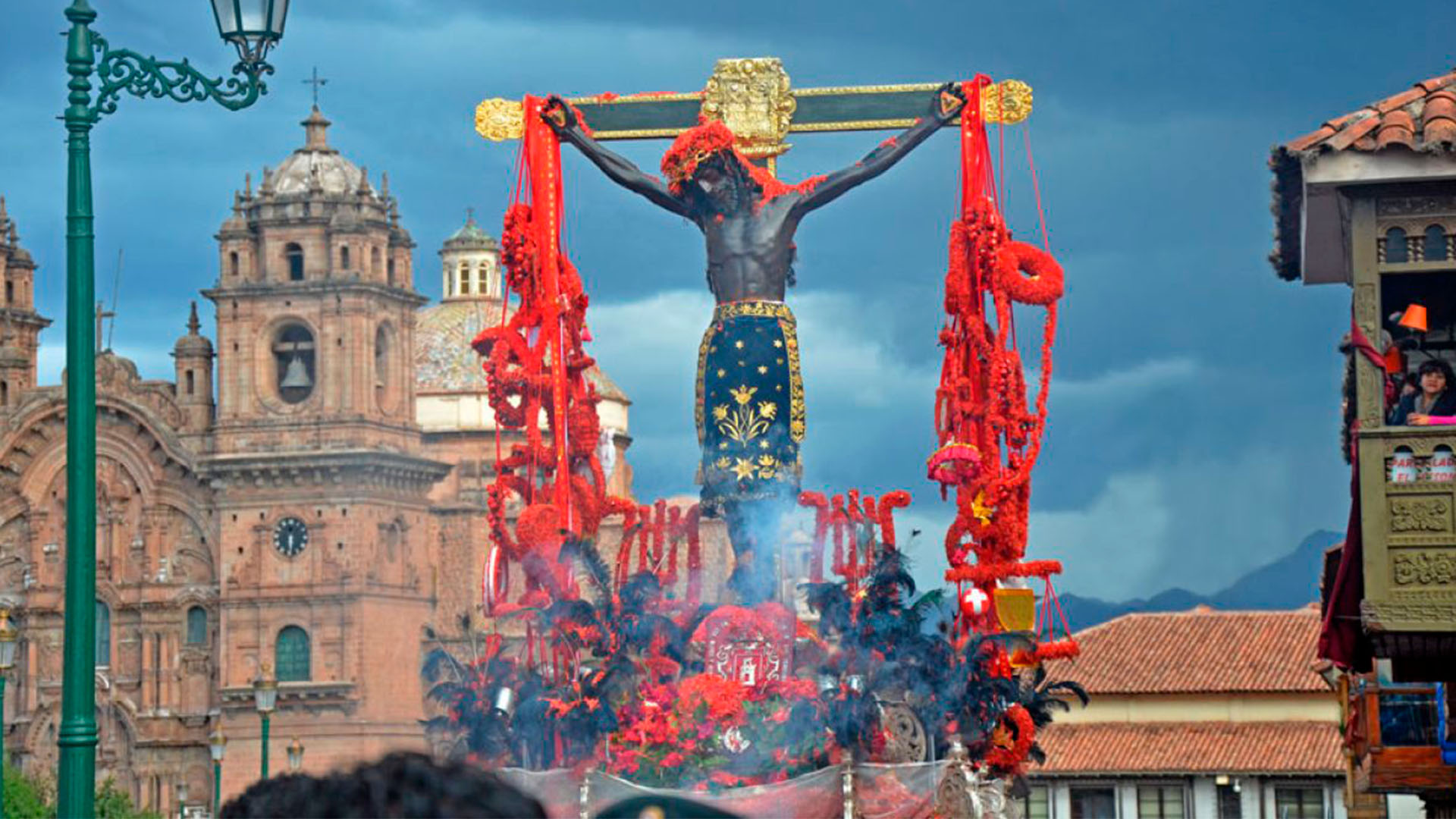


The history of the Lord of the Earthquakes dates back to the time of the Viceroyalty of Peru. At that time, King Philip II received reports that the inhabitants of Cusco still worshiped the Sun as their god. Finding this unacceptable, he ordered the creation of a large-sized image of Christ, which was to have a coppery color and features that would allow the people of Cusco to identify with it.
Thus, the image was sent to Peru. Upon its arrival, it was transported to Cusco under the responsibility of a well-known Spanish muleteer. Days after leaving Callao, they arrived at the town of Mollepata, located in Anta, being the last stop before reaching Cusco.
Despite the years, no brush has dared to retouch it. Time and, above all, the smoke from candles and tapers have blackened it, turning it into a strange dark-skinned Christ of somber appearance. It was in this place that, mysteriously, the image of Christ became much heavier, preventing its transfer. This was taken as a sign that the image wanted to stay in that place, and so it was.
However, behind this mysterious event was the muleteer, who intended to keep the image. Thus, he ordered the carving of a similar image by an indigenous person from the area, which was delivered to the cathedral and is the one currently taken out in procession every Holy Monday.
At the end of March 1650, a massive earthquake shook the city of Cusco. In their desperation, the population took Christ out in procession, and the shaking ceased, giving him the name "The Lord of the Earthquakes" and placing him in the main altar of the cathedral.
In 1720, Cusco experienced a plague, which only ceased after the Lord of the Earthquakes was taken out in procession. On this occasion, the Lord of the Earthquakes was proclaimed the Sworn Patron of the city of Cusco.
Similarly, in 1985, an earthquake devastated the entire city of Cusco, and prayers to the Lord of the Earthquakes quickly followed, calming the event and further increasing faith in the image of the crucified Christ.
The image of the Lord of the Earthquakes stands out because it does not share similar characteristics with other images of its kind. Here are the special characteristics of this image:
This celebration is particularly significant because it clearly showcases the fusion of Andean and Christian religions. The very Cathedral of Cusco, where the image rests, is built on the base of the ancient temple dedicated to the god "Apu Ila Tikse Wiracocha." The image of the Lord of the Earthquakes is carried in procession through various streets of the city, just as the ancient mummies of chiefs, priests, and Inca rulers were.
Finally, the central element of the celebration rests on the Ñuqchu flower (Salvia splendens), which was used to offer to Wiracocha and with which the crown of the Lord of the Earthquakes is currently made.
The procession of the Lord of the Earthquakes was established on March 31, 1650, and takes place throughout the Historic Center of Cusco.

Happy passengers